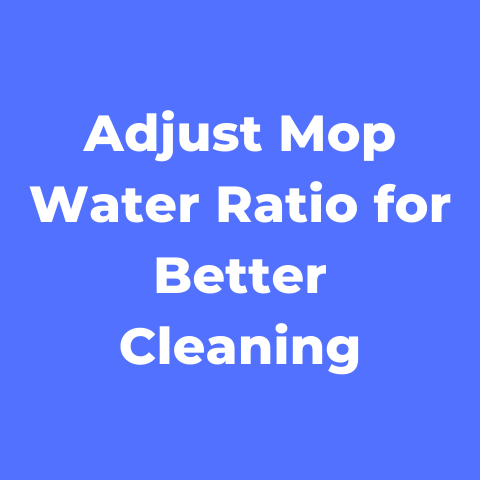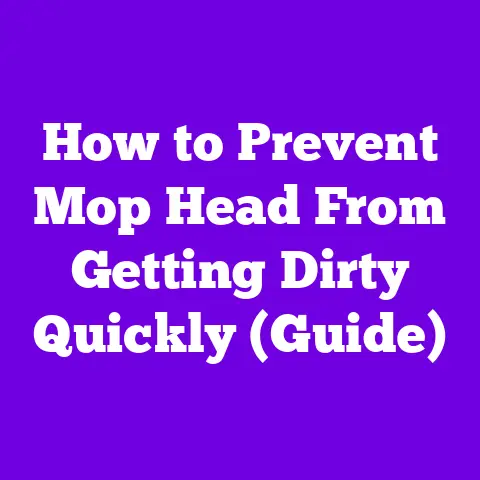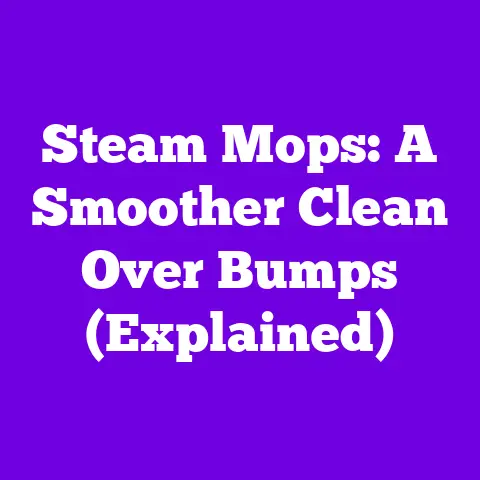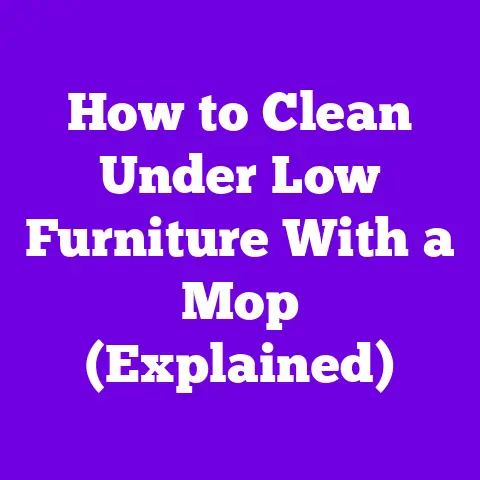Mop Not Removing Pet Hair (Explained)
Pet hair can be notoriously difficult to clean. As a pet owner, you want to keep your floors clean and hair-free. But when your mop fails to pick up those pesky fur tufts, it can be endlessly frustrating.
Why Your Mop Fails to Remove Pet Hair
There are a few key reasons why your mop struggles with pet hair:
Ineffective Mop Design
Many basic mop designs don’t have the right features to effectively grab pet hair. Mops with string or microfiber heads often push hair around instead of lifting it away. Looped-end mops can snag and remove some hair, but aren’t ideal for removing all traces.
Insufficient Pressure
You need to apply adequate downward pressure as you mop to lift fur from floors. Gentle swishing won’t cut through stubborn, clingy strands.
Over-Wet Mop Head
While moisture is key for mopping floors, over-saturating the mop head causes it to slide over hair without grabbing it.
Static Charge Build-Up
Friction from mop fibers on floors can create static charge. This causes fur to “stick” to floors instead of attaching to the mop.
Wrong Cleaning Solution
Harsh chemicals, oils, or soap in cleaning solutions can leave slippery residue on floors. This stops the mop from effectively gripping fur.
Now that you know why your mop may fail, let’s explore solutions.
Choosing the Best Mop for Pet Hair
The most critical step is using the right mop designed specifically for pet hair removal.
The key feature to look for is a rubber or microfiber mop head with a textured design that grabs and lifts hair as you mop.
Here are the best mop varieties for removing stubborn pet fur:
Rubber Bristle Mops
Mops with rubber bristles offer superior traction to lift matted pet fur that gets tracked indoors. The bristles dig into textures floors, while rubber attracts and grabs fur through static charge.
Pros: Great for carpets and rugs too. Easy rinse cleanup.
Cons: Bristles may be too harsh for some surfaces. More expensive than other designs.
Microfiber Mops
Microfiber mop heads have tiny hooks perfect for latching onto pet fur and lifting it away. The microfiber material is also highly absorbent to soak up dirt.
Pros: Great for hard floors. Machine-washable pads. Inexpensive.
Cons: Pads may fray over time. Less effective on carpets.
Looped-End Mops
Looped-end mops have a velvet-like texture with small hoops that act like mini fur brushes. These hooks snag stray hairs from floor cracks and textures.
Pros: Easy to find. Budget-friendly. Good for tile and grout lines.
Cons: Loops flatten over time. Not as effective overall for pet hair as rubber or microfiber.
No matter which mop variety you choose, always check the product description for terminology like “great for pet hair” or “removes embedded fur.”
Proper Mopping Technique Matters
Choosing the mop is only half the battle. You also need the right mopping method to lift stubborn pet fur.
Here are mopping best-practices when tackling animal hair:
- Apply enough downward pressure as you push-pull the mop. You need force to dislodge fur strands embedded in floors. Start gently then increase pressure if needed.
- Use an overlapping zig-zag pattern across the floor area. Repeated passes over the same spot helps lift even clingy fur tufts. Make sure to hit corners and along edges too.
- Work in small sections for maximum impact. Choose a 3×3 foot area and mop thoroughly before moving onto the next section.
- Rinse mop heads often. Dirty mop water just moves fur around. Rinsing ensures the mop keeps gripping hair. Use a bucket with dual sections to simplify rinsing.
- Avoid over-wetting the mop head which reduces traction. Wring out excess water so it’s damp but not dripping.
- Rinse floors after mopping then “tack” mop. This extra step grabs stray fur left behind. Use a slightly damp mop and repeat zig zag pattern.
- Frequently remove pet hair and lint from mop heads. This debris reduces mop effectiveness over time. Carefully cut away strands caught on mop fibers.
With the right mopping method, you’ll see huge improvements removing stubborn pet fur!
Helpful Preventative Tips
While mopping tackles existing hair, prevention is also key for pet owners. Here are proactive tips to reduce ongoing fur buildup indoors:
- Place mats at entryways and doorways. These catch stray fur as pets come inside, stopping it from getting tracked through the whole house. Choose rubber-backed or non-slip mats that grip fur and shake outdoors often.
- Vacuum floors frequently. Scheduled vacuuming removes surface-level fur before it gets ground into floors. Use attachments like crevice tools to target pet fur hot spots.
- Brush pets regularly outdoors. Frequent brushing reduces loose hair so less shedding happens indoors. Make it part of your pet’s grooming routine.
- Bathe pets when needed. Occasional bathing washes away dead hair before heavy shedding occurs. Use gentle pet shampoos to avoid over-drying skin.
- Consider professional grooming 1-2 times per year. Pro pet grooming includes brushing and bathing that remove huge amounts of loose hair so less ends up on your floors at home.
- Wash pet beds and fabric surfaces weekly. Furry surfaces like pet beds hold onto hair that often transfer onto nearby floors. Hot water washing removes embedded fur to prevent this. Use lint rollers too.
Following these proactive tips, along with the right mopping method, will help you win the battle against pet fur!
Troubleshooting Q&A
Still struggling with pet hair mopping? Here are answers to some frequently asked questions:
Why does my mop push hair around instead of picking it up?
If hair strands float across floors instead of lifting up, the mop fibers lack the texture or friction needed to grab them. Switch to a rubber bristle or microfiber mop variety. Also, avoid over-wetting the mop head which reduces traction.
How do I tackle really stubborn pet hair that seems glued to the floor?
For clingy fur stuck tightly to floors, start by vacuuming the area to remove surface-level strands. Then use a rubber bristle mop and apply firm downward pressure with a zig-zag motion. Soak mop bristles in hot water for extra grip. Rinse and re-mop focused areas repeatedly.
No matter how much I mop, there’s always some hair left – what should I do?
It’s frustrating battling left-behind fur! The tack mopping method helps grab stragglers. After regular mopping, quickly go over the floor again with a slightly damp mop head. The moisture helps lift hairs while the light pressure tackles strands that escaped the first round.
How can I stop loose pet hair from getting all over my floors between moppings?
Prevention is key for pet owners! Place mats at entryways to trap incoming fur. Vacuum frequently to remove surface shedding before it spreads. Brush pets regularly outdoors so less hair sheds inside. And don’t forget pro grooming 1-2 times per year removes huge amounts of hair at the source!
The Takeaway
Battling pet hair on floors is a constant challenge. But with the right mopping tools, technique and preventative steps you can win the fight! Key takeaways include:
- Choose rubber bristle or microfiber mops designed specifically for pet hair removal
- Apply firm pressure and use a zig-zag mopping method
- Work in sections, rinse mops often and avoid over-wetting
- Tack mop afterwards to grab leftover strands
- Prevent buildup between moppings with vacuuming, pet grooming and fabrics washing
With some determination – and these pet hair busting secrets – you’ll have clean, fur-free floors in no time!






